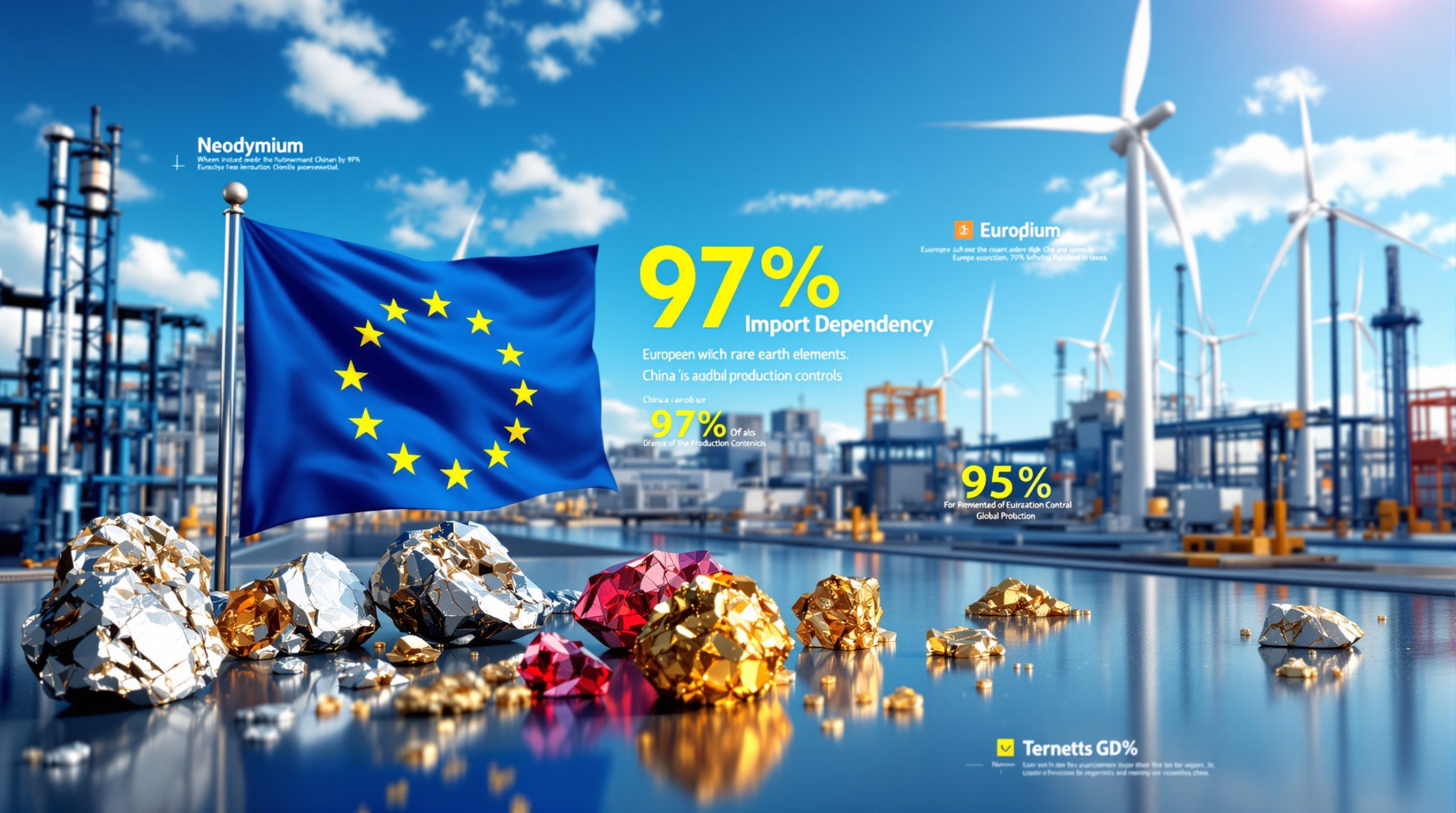The gold mining sector is experiencing a dramatic surge in merger and acquisition activity driven by a confluence of financial strength, market psychology, and operational necessity. This wave of m&a in the gold market represents a fundamental shift from the defensive strategies that characterized the previous bear market cycle.
What's Fueling the Current Wave of Gold Mining M&A?
Strong Financial Position Creates Acquisition Appetite
Gold mining companies are operating from positions of unprecedented financial strength in 2025. High gold prices, which reached approximately $2,080 USD per ounce in early 2024 according to World Gold Council data, have generated substantial cash flows throughout the sector. This financial firepower has enabled companies to shift their strategic focus from survival mode to aggressive growth strategies.
Industry expert Nicole Edgebell from Pupil Advisory explains the behavioral transformation: Companies engage in M&A during bull markets when they should logically pursue acquisitions during bear markets when valuations are compressed. The fundamental driver stems from investor conversation changes that shift from discipline and free cash flow generation toward growth imperatives.
Market Psychology Drives Deal-Making Behavior
Bull market conditions create a psychological environment where management teams receive positive reinforcement for growth-oriented strategies. This represents a complete reversal from bear market dynamics where acquisition announcements typically resulted in share price declines.
The current environment rewards companies for pursuing M&A transactions, creating a self-reinforcing cycle of deal activity. Management teams and boards observe peer companies receiving favorable market reactions to acquisition announcements, encouraging similar strategic moves across the sector.
Key Behavioral Indicators:
• Investor pressure for growth strategies over cash preservation
• Market rewards for acquisition announcements versus historical penalties
• Peer influence driving competitive positioning through M&A activity
• Management confidence increasing with rising share prices
Reserve Replacement Becomes Critical Priority
The mining industry faces a fundamental challenge of asset depletion that becomes more acute during extended production cycles. Aging mine portfolios and declining ore grades are forcing producers to supplement traditional organic exploration with strategic acquisitions to maintain production profiles.
This necessity becomes particularly urgent during bull markets when companies have the financial resources to address reserve replacement through external growth opportunities rather than relying solely on exploration success, which carries higher execution risk and longer development timelines.
Recent Transaction Examples
The IM Gold acquisition of Northern Superior demonstrates the proximity-driven M&A rationale with a 27% premium paid for geographically contiguous assets. This transaction exemplifies how operational synergies from shared infrastructure and technical expertise can justify substantial premiums in bull market conditions.
Similarly, the Kinross Gold Corporation acquisition of Great Bear Resources in January 2024 for approximately CAD $1.4 billion illustrated how strategic positioning for contiguous property control can drive significant valuation premiums in competitive bidding situations.
How Do Bull Market Conditions Impact M&A Timing?
Bull market dynamics fundamentally alter M&A premium structures and deal-making timelines through predictable behavioral patterns that have characterised mining cycles for decades. Furthermore, understanding these dynamics is crucial for predicting gold bull market catalysts that drive transaction activity.
Premium Inflation During Rising Markets
Historical M&A Premium Analysis
| Market Condition | Average Premium | Typical Range | Deal Frequency |
|---|---|---|---|
| Bear Market | 25-30% | 15-40% | Low |
| Early Bull Market | 35-45% | 25-55% | Moderate |
| Peak Bull Market | 60-100% | 40-120% | High |
Note: Premium ranges reflect analysis of historical gold mining transactions, though specific verification of peak bull market ranges requires additional documentation from specialised M&A databases.
Industry analysis confirms that takeover premiums average approximately 30% over long-term cycles, but bull market conditions create substantial premium expansion. During the previous cycle, premiums reached 80% to 100% levels as management teams became increasingly selective about accepting offers.
Management Confidence and Valuation Expectations
Rising share prices create a psychological shift where management teams develop enhanced confidence about their company's prospects. This "paper wealth effect" increases seller expectations and reduces the urgency to accept acquisition offers.
The premium expansion mechanism operates through management teams recognising that their equity values have appreciated substantially, leading them to question whether selling represents optimal timing. This hesitation forces acquirers to offer increasingly attractive premiums to secure transactions.
Board Fiduciary Responsibilities
Critical Legal Considerations:
Boards and management teams face significant legal obligations when substantial premium offers exceed precedent transaction levels. Rejecting offers that later become public whilst share prices subsequently decline can expose directors to potential class action litigation risk.
This fiduciary pressure becomes particularly acute when offers represent significant premiums over historical transaction multiples, requiring boards to demonstrate serious consideration of shareholder value maximisation regardless of management preferences for independence.
Investor Sentiment Rewards Growth
Market conditions have fundamentally shifted investor evaluation criteria from defensive metrics toward growth-oriented strategies. Acquisition announcements that historically resulted in negative market reactions now receive positive reception, encouraging more aggressive deal-making behaviour across the sector.
What Types of Assets Are Most Attractive in Current M&A Activity?
Strategic asset selection in the current M&A environment reflects both operational synergy opportunities and development risk mitigation priorities that have emerged from lessons learnt during previous market cycles. In addition, the current gold market price surge has heightened interest in specific asset categories.
Geographic Proximity Drives Strategic Value
Contiguous land packages and adjacent operations command premium valuations due to clear operational synergy potential through infrastructure sharing, combined permitting processes, and geological continuity benefits.
Infrastructure Synergy Analysis:
The Orion Resources and Rupert Resources situation illustrates proximity value creation. Analysis of project boundaries reveals that economic studies must account for spatial constraints, including open pit boundaries that must maintain 26-metre minimum distances from property lines. This creates potential space optimisation opportunities through combined development approaches.
Geological mapping demonstrates subsurface continuation between adjacent properties, suggesting combined resource development could optimise extraction economics whilst reducing individual project infrastructure requirements.
Development-Stage Projects Gain Premium Valuations
Advanced exploration and development companies represent particularly attractive acquisition targets in the current environment, offering several strategic advantages:
Target Asset Characteristics:
• Established resource bases with completed economic studies
• Permitted projects with regulatory approval pathways
• Experienced management teams with development expertise
• Reduced execution risk compared to early-stage exploration
• Defined timelines for production commencement
Market psychology has shifted dramatically regarding development-stage assets. Previously orphaned developers and advanced exploration companies that received minimal investor attention during bear market conditions now represent prime acquisition targets as bull market dynamics create recognition of their strategic value.
High-Grade, Low-Cost Operations Command Attention
Projects demonstrating superior economics through exceptional grades or low operating cost profiles receive disproportionate attention from acquirers seeking to enhance portfolio quality and margin expansion opportunities.
The focus on operational excellence reflects lessons learnt from previous cycles where companies that maintained exposure to high-quality assets during downturns achieved superior performance during recovery phases.
Strategic Acquisition Examples
Great Bear Resources Transaction Analysis:
The Great Bear situation demonstrated how takeover premiums can compound when market speculation anticipates strategic bidding wars. Share price appreciation ahead of the Kinross bid created embedded takeover premiums, resulting in acquirers paying premiums on premiums to secure strategic positions.
Rupert Resources Development Opportunity:
Following the release of their Prefeasibility Study, Rupert Resources represents a compelling combination candidate with Orion Resources due to:
• Geological continuity between adjacent properties
• Infrastructure optimisation potential through combined development
• Spatial constraints that could be resolved through consolidated ownership
• Economic synergies from shared processing and support facilities
Why Are Generalist Investors Returning to Gold?
The return of generalist investor interest represents a critical inflection point in the current gold market cycle, driven by institutional due diligence activities and broader macroeconomic positioning strategies. Moreover, this trend aligns with recent all-time high gold prices analysis, which has attracted significant institutional attention.
Institutional Due Diligence Signals Market Maturation
Professional investment firms are conducting extensive research through expert networks and specialised consulting arrangements, indicating serious consideration of sector exposure. This due diligence phase typically precedes significant capital deployment, suggesting broader institutional participation ahead.
Expert Network Activity Patterns:
Industry specialists report increased engagement from generalist investors seeking sector education through paid expert consultations. This activity contrasts with available free research from sell-side institutions, suggesting serious institutional commitment to understanding sector dynamics.
The current inquiry level indicates mid-cycle positioning rather than peak market conditions. Historical patterns show that daily inquiry volumes from expert networks correlate directly with market tops, as demonstrated during the lithium sector boom when call volumes reached unsustainable levels before market corrections.
ETF Inflows Demonstrate Retail Interest
Gold-focused exchange-traded funds have experienced substantial inflows, creating demand for underlying mining equities and providing additional liquidity support for sector valuations. Royalty companies and larger producers have particularly benefited from this institutional and retail interest.
Investment Flow Indicators:
• ETF participation creating systematic sector exposure
• Royalty company performance attracting yield-oriented investors
• Large-cap mining exposure through institutional portfolio allocation
• Media coverage expansion in mainstream financial publications
Media Coverage as Institutional Signal
Financial publications including the Financial Times and The Economist have increased gold market coverage, representing a significant shift from previous articles discussing "the death of gold" that characterised earlier market conditions.
This media attention creates an ecosystem where investment professionals must develop sector awareness regardless of their specific focus areas, contributing to broader market participation and institutional engagement.
Macro Environment Supports Gold Investment Thesis
Global economic uncertainty, currency debasement concerns, and geopolitical tensions continue supporting gold's investment narrative. These macroeconomic factors attract investors seeking portfolio diversification and inflation protection strategies.
The convergence of technical market factors with fundamental macroeconomic drivers creates conditions for sustained institutional interest rather than short-term momentum-driven participation that characterised previous cycles.
How Do Compensation Structures Influence M&A Decisions?
Executive compensation frameworks and regional regulatory differences significantly impact management behaviour during M&A transactions, creating varying incentives across different jurisdictions.
Regional Differences in Executive Incentives
Comparative Executive Compensation in M&A Transactions
| Jurisdiction | Severance Multiple | Share Vesting | Additional Benefits |
|---|---|---|---|
| Canada | 2x base + bonus | Full acceleration | Comprehensive |
| Australia | 1x base + bonus | Partial acceleration | Limited |
| United States | Variable | Depends on terms | Negotiated |
Canadian mining executives typically receive more substantial compensation packages upon transaction completion, including two times base salary plus bonus, full share vesting acceleration, and comprehensive benefit packages. This generous compensation structure potentially reduces management resistance to acquisition offers.
Australian regulatory frameworks limit executive compensation to one times base salary plus bonus, with more restrictive share vesting arrangements. These limitations may increase management selectivity regarding transaction acceptance, as personal financial incentives are comparatively modest.
Management Fatigue During Market Cycles
Extended bear markets create psychological pressure on management teams through sustained periods of minimal investor attention, declining share prices, and operational challenges. This fatigue can make acquisition offers more attractive as exit strategies that provide personal and professional relief.
Bear Market Management Challenges:
• Daily share price evaluation creating psychological pressure
• Limited investor attention despite significant effort
• Fundraising difficulties in adverse market conditions
• Operational constraints due to capital limitations
Conversely, bull market conditions often increase management confidence and reduce transaction urgency, making it easier for teams to reject offers and maintain independence strategies.
Board Fiduciary Responsibilities
Directors face legal obligations under corporate governance frameworks to consider substantial premium offers seriously, particularly when offers exceed historical transaction multiples. This creates pressure to engage with potential acquirers even when management teams prefer maintaining independence.
Legal Risk Considerations:
The fiduciary responsibility framework requires boards to demonstrate serious consideration of shareholder value maximisation. Rejecting significant premium offers without thorough evaluation could expose directors to potential litigation if share prices subsequently decline and rejected offers become public knowledge.
What Role Does Operational Synergy Play in Deal Valuations?
Operational synergies represent the primary justification for premium valuations in mining M&A transactions, with quantifiable benefits from infrastructure consolidation, economies of scale, and risk mitigation through diversification.
Infrastructure Sharing Opportunities
Adjacent mining operations can achieve significant cost reductions through shared infrastructure utilisation:
Synergy Categories:
• Processing facilities and metallurgical plants consolidation
• Transportation infrastructure and logistics network optimisation
• Power supply and utility connection sharing
• Technical expertise and operational knowledge transfer
• Permitting experience and regulatory relationship leverage
Economies of Scale Benefits
Combined operations typically achieve superior economics through:
Scale Advantages:
• Reduced unit costs through operational efficiency improvements
• Enhanced procurement power for supplies and services
• Improved technical capabilities through combined expertise
• Greater financial flexibility for capital investment programmes
• Operational redundancy providing production reliability
Risk Mitigation Through Diversification
Portfolio diversification across multiple assets reduces operational risk exposure and provides production stability, making combined entities more attractive to investors and lending institutions. This risk reduction often justifies premium valuations even when direct synergies are difficult to quantify precisely.
Geographic Synergy Case Studies
Infrastructure Constraint Analysis:
Detailed examination of adjacent properties reveals spatial optimisation opportunities that may not be apparent without combined ownership. Open pit boundary interactions, tailings storage facility requirements, and supporting infrastructure positioning can create material economic advantages through coordinated development approaches.
Geological continuity between adjacent properties enables optimised extraction strategies and potentially extended mine life through coordinated resource development that maximises recovery whilst minimising development capital requirements.
Which Market Indicators Signal Peak M&A Activity?
Identifying market peak indicators helps investors navigate the transition from healthy consolidation to speculative overheating that typically characterises late-stage bull market conditions. However, understanding these indicators requires comprehensive gold investment strategies trends analysis.
Warning Signs of Market Overheating
Speculative Activity Indicators:
• Excessive premium payments reaching 80-100% levels consistently
• Speculative bidding wars for marginal asset quality
• Inexperienced management teams making transformational acquisitions
• Debt-financed transactions in highly cyclical businesses
• Celebrity endorsements driving investment decisions rather than fundamentals
The current environment has not yet reached these extreme characteristics, suggesting continued runway for additional consolidation activity before market peak conditions emerge.
Sustainable M&A Characteristics
Healthy consolidation typically demonstrates:
Quality Transaction Features:
• Strategic rationale based on clear operational synergies
• Reasonable valuations relative to asset quality and peer comparisons
• Strong balance sheets supporting transaction execution
• Experienced management with successful integration track records
• Clear value creation pathways for existing shareholders
Expert Network Activity as Leading Indicator
The intensity of generalist investor inquiry through expert networks provides a reliable leading indicator of market positioning. Current activity levels suggest mid-cycle conditions with additional upside potential before peak speculation emerges.
Historical Pattern Recognition:
Previous market cycles demonstrate predictable behavioural characteristics despite unpredictable timing. The ability to recognise behavioural patterns provides more reliable market positioning guidance than attempting to predict specific timing or price targets.
How Should Investors Position for M&A Opportunities?
Strategic positioning for M&A opportunities requires understanding target company characteristics, risk management frameworks, and timing considerations that maximise probability of successful outcomes.
Target Company Characteristics
Attractive acquisition candidates typically demonstrate several key characteristics that make them appealing to strategic acquirers:
Prime Target Features:
• Strategic location adjacent to existing mining operations
• Proven management teams with successful development experience
• Permitted projects with clear regulatory pathways
• Strong technical assets with expansion potential
• Reasonable valuations relative to peer company metrics
• Adequate infrastructure space for tailings and processing facilities
Investment Strategy Framework
Position Sizing and Diversification:
Successful M&A investing requires recognising that speculation does not always materialise into completed transactions. Even successful deals may not generate expected returns if entry timing or valuation assumptions prove incorrect.
Risk Management Principles:
• Diversification across multiple potential targets rather than concentrated bets
• Position sizing appropriate to risk tolerance and portfolio allocation
• Entry timing focusing on early positioning before market recognition
• Profit-taking strategies as premiums expand during bull market conditions
Timing Considerations
Strategic Positioning Timeline:
• Early positioning in undervalued targets before widespread market recognition
• Profit-taking strategies as premiums expand during bull market progression
• Portfolio rebalancing to maintain appropriate sector exposure limits
• Exit planning preparation before market conditions begin deteriorating
Due Diligence Framework
Investors should focus on companies demonstrating genuine strategic value rather than momentum-driven or celebrity-endorsed investments that may lack fundamental support for premium valuations.
Investment Thesis Documentation:
Writing down investment rationale at purchase provides discipline for exit decision-making. Clear documentation of expected catalysts, timeline assumptions, and success metrics enables objective evaluation of position management regardless of subsequent market sentiment.
What Are the Long-Term Implications for the Gold Mining Sector?
The current M&A wave is reshaping the gold mining industry structure with implications for supply dynamics, investment landscapes, and competitive positioning that will persist beyond the current market cycle. Furthermore, insights from industry experts suggest these merger trends are accelerating across the sector.
Industry Consolidation Trends
The ongoing consolidation is creating fundamental structural changes across the sector:
Structural Evolution:
• Fewer, larger producers with geographically diversified asset portfolios
• Improved operational efficiency through economies of scale
• Enhanced financial stability of remaining independent companies
• Reduced exploration activity as companies prioritise integration over discovery
• Higher barriers to entry for new market participants
Supply Chain Implications
Industry consolidation affects multiple aspects of the gold supply chain:
Market Structure Changes:
• Gold supply stability through improved operational reliability of larger entities
• Price discovery mechanisms with fewer independent price-setting participants
• Regional market dynamics as local operations combine under single ownership
• Service provider relationships evolution toward larger, more sophisticated clients
Investment Landscape Evolution
The changing sector structure creates new dynamics for different investor categories:
Investment Impact Areas:
• Investment options available to retail and institutional investors
• Liquidity characteristics of remaining publicly traded companies
• Valuation methodologies required for larger, more complex entities
• Risk-return profiles of gold mining investments across market cycles
Geological Expertise and Human Capital
The consolidation trend highlights critical challenges in geological expertise and human capital management. Geologists represent the foundation of mining businesses, yet compensation structures often fail to reflect their strategic importance.
Talent Management Implications:
Companies that prioritise geological talent development and retention, exemplified by organisations that provide competitive compensation and share exposure to geological teams, have demonstrated superior discovery track records compared to firms that treat geological expertise as commoditised services.
Innovation and Technology Adoption
Larger consolidated entities may have enhanced resources for technology adoption and operational innovation, but could face reduced agility compared to smaller independent operators. The balance between scale advantages and entrepreneurial flexibility will determine long-term competitive positioning.
Competitive Dynamics:
The consolidation wave creates opportunities for nimble junior companies to fill exploration and early-stage development roles that larger entities may find less attractive due to scale requirements and bureaucratic constraints. Moreover, recent analysis from industry experts confirms this trend is gaining momentum globally.
Future Market Cycles
Understanding that current consolidation activities occur primarily during bull market conditions suggests that future bear markets may create opportunities for new entrants and spin-off activities as market dynamics reverse and larger entities seek to optimise portfolio focus.
Cycle Implications:
The predictable nature of behavioural characteristics across market cycles suggests that investors who understand these patterns can position strategically for different phases of future consolidation and expansion activities regardless of specific timing predictions.
Looking for the Next Major Mineral Discovery?
Discovery Alert's proprietary Discovery IQ model delivers instant notifications when significant ASX mineral discoveries are announced, transforming complex geological data into actionable investment insights. Explore how major mineral discoveries have historically generated exceptional returns, then begin your 30-day free trial to position yourself ahead of the market during this dynamic M&A environment.




